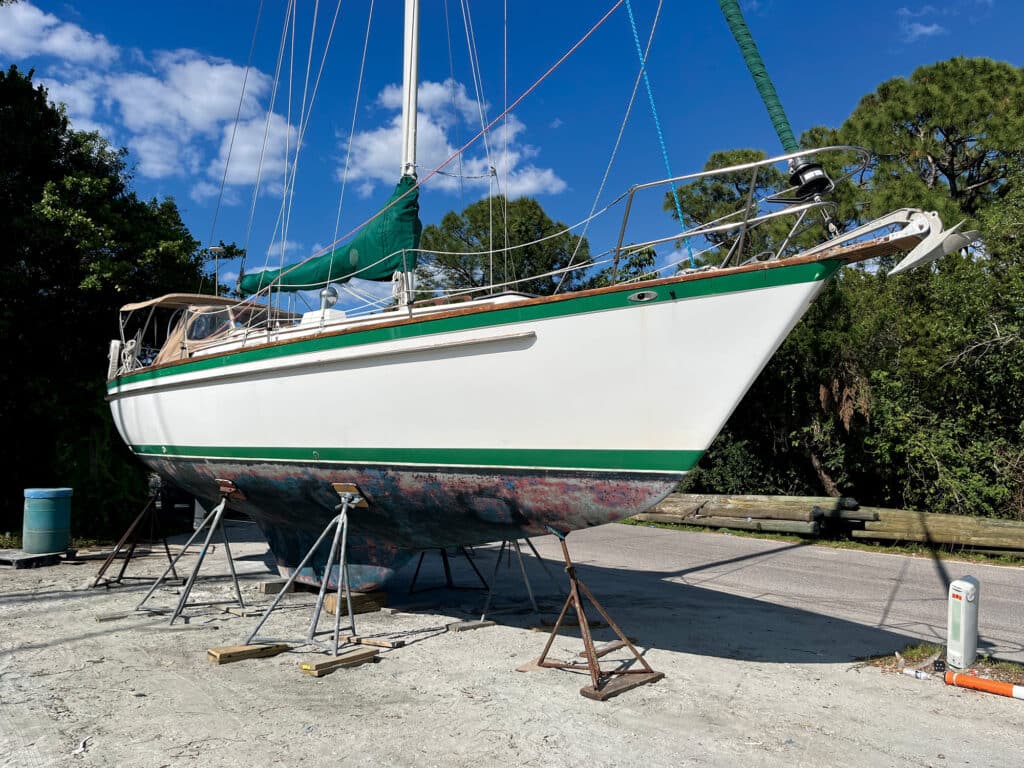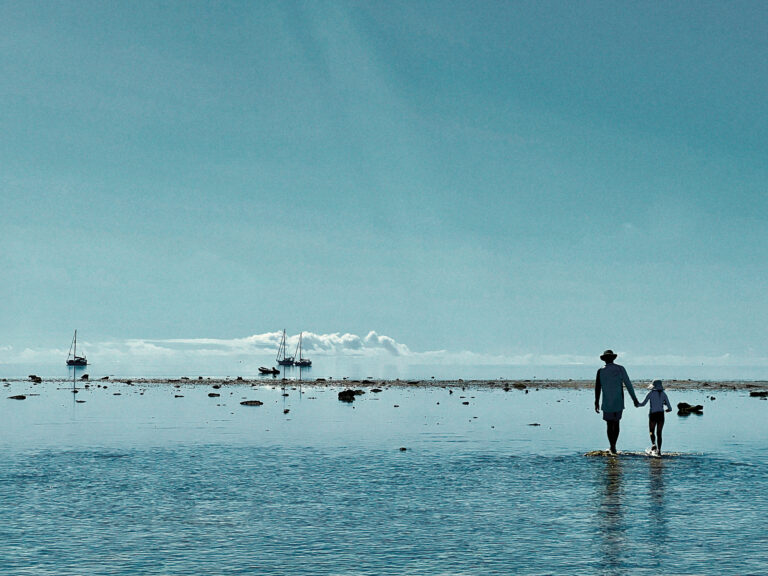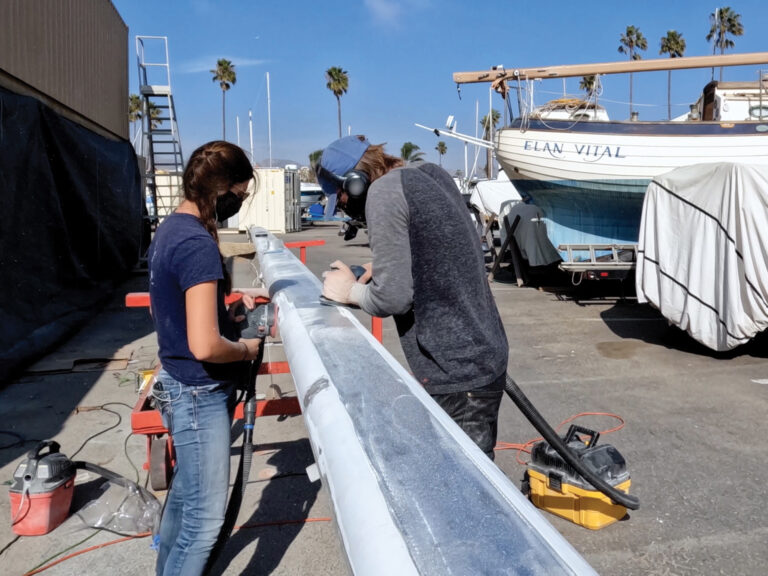
Among the many revelations I’ve experienced since purchasing a 1970s-era classic-plastic cruising boat and setting up shop on the Gulf Coast of Florida for half the year is the fact that yachts don’t get hauled out annually here for a fresh coat of bottom paint. In New England over the years, I’ve owned a series of sailboats, all of which spent every winter on the hard in a boatyard safe from the ravages of endless nor’easters. Their bottoms were all prepped and repainted before getting launched again the following spring. It’s not a particularly pleasant task, but one I’d always tackled myself—yet another annoying yin to the rewarding yang of owning a sailboat.
So, when I bought my Pearson 365, August West, a year ago, I was pretty psyched to learn that I wouldn’t have to undergo the labor (and cost) on a yearly basis. In fact, I thought that I might get a pass altogether for a season or two. Then, two things happened: First, the diver I hired for a monthly bottom scrub, when asked about the condition below the waterline, had a pithy answer (“poor”); and second, the previous owner, when queried about the last time he painted the bottom, was equally succinct (“um, good question”). There really was no alternative: It was time to haul the vessel for new paint.
In Rhode Island, if in possession of a pulse and a valid credit card, this had never been an issue; plenty of yards in or near Newport were more than willing to relieve me of cash. In Florida, at least in the greater Sarasota area, it was more of a challenge. The first couple of places that I called flat-out said that they didn’t work on sailboats. And it was quickly apparent that, if I did find a spot, doing the work myself was out of the question. Finally, on a tip from a local sailor, I learned of an outfit called N.E. Taylor Boat Works, just a few short miles up the Intracoastal Waterway from my slip on Longboat Key, in a place called Cortez Cove.
The tiny adjacent community of Cortez, measuring just 2 square miles of real estate, was an oasis from the strip malls. Cortez is a commercial-fishing village founded in the late 1800s that still retains its old-timey Florida vibe. Home to a great fish market, a big fish processing plant and a couple of seafood shacks, it seemed of a different time and place, and an extremely welcoming one at that.
The cove, however, is not such a simple spot to get into. Peering in from the ICW, the fleet of rather large fishing boats would suggest otherwise, but the actual channel is narrow and marked by hand-painted signs, one of which I, of course, missed. In what’s becoming a disturbing new habit, I ran aground…directly in front of one of the busy waterfront restaurants right at dinner hour. Free entertainment for all. Luckily, I’m getting good at getting off the bottom, and I made it to the yard unscathed.
Descendants of the Taylor family, part of the original group of Cortez settlers from North Carolina, still run the yard. It’s both friendly and funky, and I mean the latter as a high compliment. From the time I pulled in until the time I pulled out, nobody ever bothered asking me for, well, anything: my full name, an address, payment details, nada. Almost as an afterthought, it occurred to me that, since I was in a boatyard and all, and I’d purchased a pair of deck hatches that were sitting in my V-berth, I might as well get them installed (a task I’d originally planned to do myself but was not relishing). No muss, no fuss, just two hours of reasonable labor costs that would’ve taken me much longer.
Getting out of the boatyard was a lot easier. Back in my slip a few days later, my diver returned (he does several boats in the marina), noted the paint job, and said I was good to go for a while. “That could last you a few years,” he said, which made me smile. Whenever that time does come again, though, I’ll know to return to Cortez Cove.
Herb McCormick is a CW editor-at-large.








